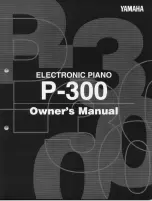
2020/11/14 19:23
3/15
MIDIbox Quad Genesis: Front Panel
MIDIbox - http://www.midibox.org/dokuwiki/
Photos
Front:
Back:
Populated and with almost all LEDs lit:
Parts List for MBQG_FP PCB
This is the set of parts I used to build the two MIDIbox Quad Genesis units I constructed. It can also
serve as guidelines for if you're building your own board from scratch on veroboard. Here are some
notes and caveats:
As explained above in the section of the aluminum front panel, I used LED pipes for the LED
rings, to give them a distinctive oblong shape. To save money on the milling costs and labor on
inserting hundreds of tiny plastic pieces into the front panel, most of which are either too small
or too big, I recommend making the LED rings just by having 3mm LEDs sticking up through the
aluminum. In this case, the LEDs I used below will be too bright to look at directly–they were
used to illuminate the LED pipes. So please consider changing to different LEDs.
Please note that for the LEDs which are under illuminated buttons or under the remaining LED
pipes, you will need LEDs which are very bright like the ones below! Cheap 1mcd LEDs will be
completely invisible! You need at least 1000mcd; the brightnesses I used are listed below. If you
are going to the trouble of making this thing, don't skimp on the LEDs!
Also don't skimp on the encoders! For MIDIbox FM V2.0/V2.1 I used cheap encoders from China
to save money, and many of them barely work anymore!
Of course, the color of all the LEDs is completely up to personal preference, though you should
always use the same two colors beneath all bi-color buttons. Please plan out carefully how
many of each type of LED you will need based on your color preferences and which LEDs will be
sticking through the front panel versus lighting up buttons or light pipes. Trust me, you don't
want to use regular LEDs to try to light up the plastic, it'll look dim and poor; and you don't want
to use the high-brightness LEDs sticking through the front panel, they will blind you!
On the PCB itself, the individual buttons, LEDs, and diodes are usually not marked. To simplify
PCB design in KiCad, “assemblies” were created with e.g. an encoder and 16 LEDs, or a button,
two LEDs, and a diode. This is why they're marked “A21” or whatever. All the diodes are the
same 1N914 or 1N4148 (or actually any through-hole small signal diode), and each one has a
cathode marking, so there should never be any confusion. With the exception of the LEDs in the
LED rings, every LED on the board has an actual diode symbol marked, so there should be no
confusion about which direction they go (square pad is anode is longer lead). In the LED rings,
the four quadrant LEDs' directions are marked, and the rest go in the corresponding direction,
following around the circle (anode always on inside). All the tact switches are also the same–just
make sure each one is pushed in fully before soldering!

































